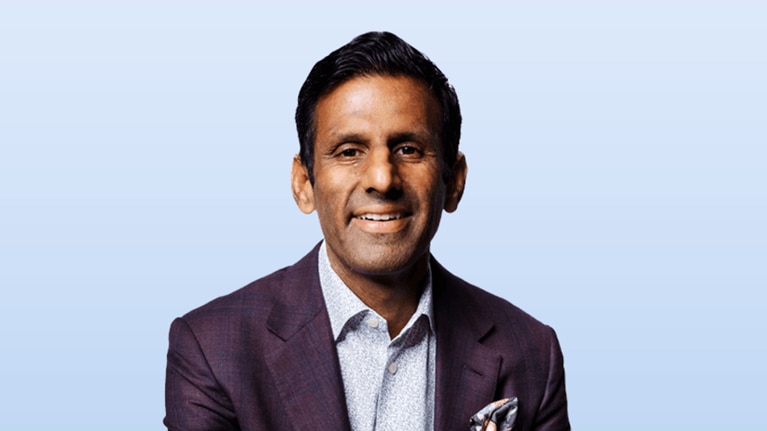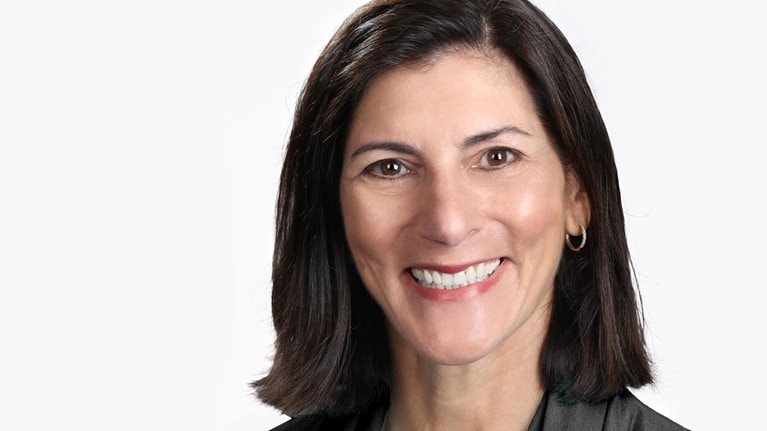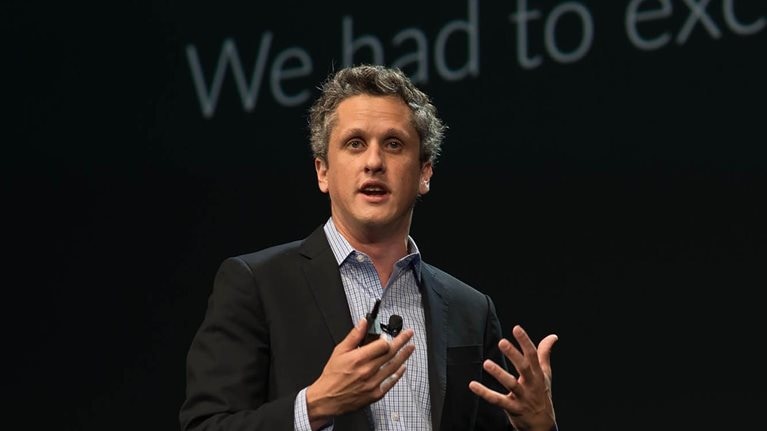Over its almost two decades, file sharing and storage platform Box has periodically encountered skepticism over its ability to keep growing. And yet, the company has continued to thrive, both benefiting from and helping to generate the enterprise SaaS wave it has been riding.
In a recent interview with McKinsey senior partner Paul Roche and partner Sid Tandon, Box co-founder and CEO Aaron Levie spoke about such issues as how value creation and value metrics change over time, the healthy tension of making decisions about product funding, the balance of new logos versus net retention, and the importance and challenge of transitioning to a more balanced growth stage. Their edited conversation appears below.
McKinsey: You launched your business almost two decades ago. Just how different is the sector today?
Aaron Levie: The amazing thing about enterprise software now is the markets are two orders of magnitude larger than where they were 15 or 20 years ago. So, if you just think about the factors at play now for building enterprise software, let’s just take the 1990s or the early-2000s and compare it to today.
Maybe you had tens of millions of people working in corporations on built out networks, maybe in the high tens of millions. You had slow internet at home. Dial-up and cable modems were starting to become more ubiquitous.
We had very slow computers and browsers, so you couldn’t really build applications efficiently in a browser. You had to ship desktop software that needed to be implemented. The cost of computing and storage and networking was insanely expensive, in some cases 100 times more expensive than it is today. Think about building enterprise software in that era—you had to have extremely expensive distribution capacity and partners, because you had to be physically present in every single customer conversation.
Customers had to implement the technology themselves. There was a total addressable market of tens of millions of end-user seats. And the actual applications you could build were very inefficient, very clunky, and not particularly compelling.
Fast forward to today. The addressable market for literally almost any enterprise software company on the planet is a couple billion people. So, if you use an internet connection to do any work whatsoever, you are an addressable audience for enterprise software. Every single internet-enabled worker on the planet is now your market.
The cost of infrastructure has dropped precipitously. The ability to build software has increased rapidly. Your distribution is now done at the end-user level, where you can grow virally, whether it’s through knowledge workers or developers. There are so many more areas where you can drive growth.
How value creation and value metrics evolve
McKinsey: In that time, as you’ve built a new startup into a public company that today has close to $1 billion in revenue, how has your concept of value creation evolved?
Aaron Levie: We were trying to solve this problem of file sharing in collaboration and solve it better than anybody else. That’s really the product stage. And then you’ve got to get the product to a bunch of people, so now you’re at the growth stage, thinking about go-to-market. And hopefully, if everything’s going well, and you’ve got the idea, product, and growth, eventually you have more scale to do more resource allocation.
Then the questions are, what product investments do you want to make, what markets do you want to enter, how do you want to think about continuing to scale? And then ultimately, you layer on capital allocation as sort of a final element, which is where we are now.
Throughout our past 16 years we have been thinking, how do we create value at every single one of those stages, ultimately working backward from what the customer wants from us. At the same time, we focus on what can be built that is most differentiated, that enables us to be more successful every single year as we continue to scale.
And as we have scaled, we need to be thoughtful about the different markets that we serve. When you are in the private market, obviously a lot of that shareholder value is going to accrue to venture capitalists and employees. Then as you become public, you must think about your public shareholder base and different means of additional value creation.
McKinsey: What were the key value metrics that you used to drive yourself and the company forward?
Aaron Levie: At every stage of maturing as an organization, you still need to be really good at the prior stages. It’s not as if once you finally get to the resource allocation or capital allocation phase that it becomes your exclusive focus.
Every couple of years, depending on the stage that we’ve reached, we add a few more metrics to the scorecard that we use to run the business, whether that’s our leadership team or the core KPIs [key performance indicators]. If you looked at our metrics 15 years ago, they were basically product activity, customer support challenges, and site uptime. That was all we had to do to survive.
But as you’re generating revenue, you start thinking about, what’s our new recurring revenue generation? What are our cohorts? What are our retention rates? At that point, we had six or eight important metrics. Then, as we scaled to things like the resource allocation phase, and we’re starting to think about where we want to place bets in the business, you add in more metrics: What’s our different regional performance? What’s our segment performance? How are we doing in certain industries? What’s our payback period on certain customer segments?
Now we have expanded to the capital allocation phase, where we have to track equity issuance and what’s going on with dilution and EPS [earnings per share]. We’re at a point where we track about 50 or so metrics that are the most important KPIs that we rely on to operate the business. Those get converted into a slightly more focused set of metrics that we look at every single week. And those in turn get layered up into quarterly KPIs that we’re looking at for key performance indicators across the business. That ranges from daily to weekly activity in our product to retention rates of customers to product expansion rates to pipeline and new revenue generation in all of our segments, all the way to employee retention and hiring KPIs as well. They really span the entire business, including go-to-market, product development, and G&A.
Product-market fit and resource allocation
McKinsey: What about product-market fit? Does it become less important as you become bigger?
Aaron Levie: I believe this is where companies lose their way and get disrupted. They think they’ve graduated to some new set of skills and operating models and no longer require what got them to this stage in the first place. You reach a certain scale and forget how to do that early-stage product-market fit or early innovation and ideation.
When we perform at our best, we look almost like during our smallest start-up days, moving quickly, iterating with customers in real time, proving out new business models in a very rapid and agile way. The times where we’ve failed have been when we’ve gotten away from proving out that early market fit and value proposition. Obviously, the essence of it is figuring out how to ensure that you’ve built the right thing at the right time for customers, and it’s only when you have that product-market fit, that you can go into scale mode.
We now do product-market fit for every single one of our products. At any given time in our business, we have some products that are incredibly mature, where we’re doing more iterative innovation or optimization of the features, with 30 or 40 engineers working on the at-scale part of the service. We also have new products emerging that look exactly like a small startup would create, but they’re built on our main platform, with a new team of just five or 10 people doing that early design, product innovation, and iteration with customers.
Hopefully, if we’re right, that same small team in two or three years from now will look like the mature team. And then we’ll have another set of products that are being introduced into the pipeline. With that methodology, at least in software, there’s really no limit to the ability to continue to produce more and more innovation for your customers.
McKinsey: How do you handle resource allocation with such a wide range of products (and product maturities)?
Aaron Levie: There is an interesting tension when you get to the resource allocation phase of a business and you must decide where to make the incremental investments, more in building out the next set of incubated products or supporting the more mature ones. It’s a bit of game theory; you might want to invest in a new product that’s going to help you in three years, but you might also have a quasi-mature product where some additional innovation would extract the next set of value.
That’s a healthy tension, of course, because it means that you are constantly making tough, strategic decisions about where your product is and where the investments will have the greatest impact. Having some constraints in the system can be helpful for that. Ironically, the times we’ve made the worst decisions have been when we’ve had the most abundant resources and had the least need for profitability, because we were the most distracted and lacked that tension of a really thoughtful, judicious process.
McKinsey: How do you manage that tension?
Aaron Levie: This is independent of how Wall Street values things, but in general growth is almost always the right solution, assuming you have a business with strong underlying economics. In enterprise software, where a new customer comes onto the platform and ideally stays with you over a long period of time, you really want to just grow as fast as possible because you are in effect building an annuity business. You get more market share, that builds more network effects, you can have more developers that build up your platform, that generates more customers. There’s almost always a flywheel of more growth begetting future growth and value.
Every company has a different threshold, but if you prioritize growth, there is a general framework. You’re trying to find that optimal point where a reinvested dollar is going to be used most efficiently, producing an attractive return in terms of the customer you’re acquiring staying with you, and helping to build functionality that has a high likelihood of being successful.
There are some businesses where I would argue you should be spending 300 percent of revenue on sales and marketing because every single customer you acquire is going to be with you for five or ten or 15 years, at a really healthy ACV [annual contract value] level.
And then there are some business models where you probably shouldn’t spend more than 15 percent of revenue on sales and marketing, either because the efficiency is just built in or the customers you’re acquiring are not going to be that compelling over the long run. You need to decide where you are on that continuum.

SaaS and the Rule of 40: Keys to the critical value creation metric
Balancing new logos versus net retention
McKinsey: When you’re looking at growth, how do you think about the difference between new accounts versus NRR [net revenue retention]?
Aaron Levie: This is probably the most heavily debated topic in the industry. Certainly, there are different answers for different stages. Depending on how big you are, in the beginning stages it’s generally all about winning new logos. Later you want a balance of focusing on new logos and the current customer base.
And then eventually you get to a stage where, while new logos are still important, the majority of the revenue is going to come from the existing installed base. I think that’s just a question of where each company is in their growth maturity, and their total market penetration for their product.
McKinsey: What factors go into improving net retention?
Aaron Levie: The most important thing is, is your customer getting value from your product? And are you able to consistently increase that value, such that the customer wants to expand over time? In our case, that value is generated from more customers using the product, more data coming into the system, and more business processes being powered, which then enables us to up-sell customers in the future.
We spend a lot of our time internally thinking about global customer health metrics—adoption KPIs; daily, weekly, and monthly active users; adoption of individual features by customers. These tend to be a leading indicator to our ability to have future up-sell potential. And so that synergy between product adoption, marketing-oriented education for the customer base, customer success and support—really helping customers with their use cases, all the way over to sales, enabling the renewal to drive expansion—that is the lifeblood of our business and certainly is for any modern SaaS company.
At any given time, a significant portion of our customer base is using the product more than what they’re paying for, which should lead to future up-sells. The more that your product can spread itself and grow at a rate that the customer controls, the greater likelihood you can produce significant net retention rates.
Keys to successful SaaS leadership
McKinsey: What kind of executive talent is required to succeed in this business?
Aaron Levie: Enterprise software is a collection of some of the most varied disciplines in one business today. Parts of our business look more like a consumer internet company. We’re tracking daily activity levels of our product because that’s going to lead to future revenue growth, so many parts of the business look a lot more like a Google or a Facebook, whereas maybe 20 years ago it would’ve looked like a Sun Microsystems or an Oracle.
Because we serve everything from end users all the way up to the world’s largest corporations, we have at least three segments that have slightly different buying patterns. We have a self-serve digital segment, an SMB [small and medium business] and commercial segment, and a large enterprise segment. And each of those in its own way almost runs as a slightly different business with its own business model.
We also have the software, scalability, and infrastructure challenges of a large internet scale company. We store hundreds of petabytes of data, and we have to serve traffic everywhere around the world, to tens of millions of users. If you think about the KPIs that we’re looking at—and this ties back to management and the core operational engine—we look like a mix of Google and Facebook and Salesforce and Oracle. But all that falls under one business, which means that you need a team made up of a diverse set of talent.
For instance, often our engineers, or our engineering leadership, will have significant experience in the consumer internet. And our sales leadership might include individuals that have led either SMB or enterprise sales organizations. In marketing, you might have somebody that has done at-scale digital marketing as well as someone who has done enterprise marketing.
Having all these different types of talent is critical to running a modern, at-scale enterprise SaaS business. Because of all these people’s different disciplines and backgrounds, our extended leadership team is one of the more exciting, dynamic teams that you could build and be a part of. Some were at Yahoo building internet infrastructure, some were at Cisco selling large-scale enterprise systems, some were at Salesforce doing modern SaaS, and some were at Adobe doing modern digital marketing.
McKinsey: What do top management and boards need to keep in mind when transitioning from scaling to a more balanced growth phase?
Aaron Levie: The first question that any board or management team has to answer is, “What is the best use of capital.” Very often, it is a relatively easy decision to invest in areas of growth, either because there are new markets you need to enter, new product categories to expand into, or new bets you have to make.
But a couple of years ago, when we were approaching $700 million or $800 million in revenue, we got to a scale where we said, “You know what? At this stage it starts to make more sense that we’re going to balance growth and profitability.” Of course, we had to figure out the right balance of growth and profitability that would generate the right kind of value for shareholders.
So, we landed on a framework that we put out to Wall Street, really driven by the Rule of 40, that we would achieve 12 percent to 16 percent growth and 23 percent to 27 percent operating margin, within two years, which is our FY24. At that time, we only had a combined Rule of 40 metric of about 13 or 14 percent, so it did not initially seem believable that we were going to nearly triple that over a three-plus-year period. But we stepped back and asked ourselves, “What are all the ways that we think we can get more efficient without sacrificing growth?”
And that’s the key concept—where can you drive profitability and operating margin and leverage without sacrificing at least healthy growth?
Owning the challenge of more efficient growth
McKinsey: What exactly do you mean by “healthy growth”?
Aaron Levie: Let me explain it this way. We looked across the business and said, “Okay, clean sheet of paper, where are we spending money where we’re not actually getting growth, and we might in fact be getting negative returns because we’ve managed to complicate the model?”
We found material spending that had just crept up over the years and was making us grow more slowly. In some areas, for instance, we had unnecessary sales or marketing programs running in a competing fashion, which made us more unfocused when we were in front of a customer. We were spending more money than we needed to generate a dollar of revenue, and we would become far more efficient in generating the same revenue by reducing that spend. We also looked to generate higher sales productivity by deciding to double down on certain regions while pulling back from others.
We also made some key decisions about our infrastructure. We had been on this hamster wheel of building up more and more data centers and infrastructure. At the same time, we were now competing with public cloud vendors on software innovation for the infrastructure layer, which is not a desirable position. As a result, we decided to move fully to the public cloud.
In all these areas, we felt we wouldn’t have to sacrifice any incremental growth by making these changes; on the contrary, we felt we could accelerate growth if these new initiatives and programs were done properly. That’s basically the mode that we’ve been in for the past couple of years—driving both more profitability and higher growth by being more focused and concentrated in our bets, and ultimately being more judicious on what we decide to light up versus optimize. And now we’re starting to finally deliver on that goal of meaningful change.
McKinsey: How do you lead through this? Such changes can be wrenching for teams and employees.
Aaron Levie: We really tried to frame it as an exciting project to improve shareholder value, and that got everybody onboard.
One of our core values is “Be an owner.” And so, we democratized the challenge and said to the entire organization, “Where are the areas that you, as an owner, would make a different decision from an efficiency standpoint?” Across the business, people were coming up with amazing ideas. In some cases, they were “threefers”; I remember one idea that would make our product faster, reduce the spend on infrastructure, and make our developers more productive in this particular area.
Timing your transitions
McKinsey: If you were advising a software company that had $100 million to $500 million in revenue, what would you tell them to focus on?
Aaron Levie: What I would say in general is the greatest value creation for any scale of company, whether it’s a new start-up or a multibillion-dollar business, is to say, “What can we do to make sure our product road map is best aligned to how enormous the opportunity is in software, and how do we do that efficiently?” If we can get those things right—if we can build the right software, enter the right categories that are high growth in nature with disruptive business models, and we can do that efficiently—then I think you have a working model to generate value in the enterprise software world.
McKinsey: I think we’d all agree that when you can get it growth is by far the best thing for an enterprise software company. But a lot of companies don’t realize until too late that there is no more growth left.
Aaron Levie: That is maybe the most important thing that you have to get right in these businesses—when to move to your next act. Nailing the moment when it is time to layer on another product or expand into a new market, and capturing and timing those transitions successfully, is the determining factor for the winners and losers.
Comments and opinions expressed by interviewees are their own and do not represent or reflect the opinions, policies, or positions of McKinsey & Company or have its endorsement.


